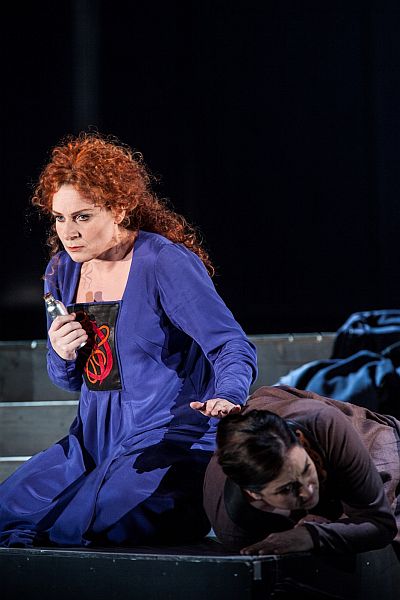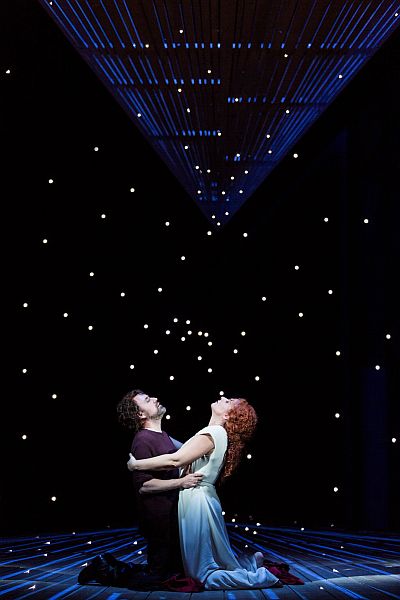 Sweden Richard Wagner, Tristan und Isolde: Soloists, Göthenburg Opera Orchestra and Chorus, extra male chorus, Stefan Lano (conductor), GöteborgsOperan, 09.03.2013 (NS)
Sweden Richard Wagner, Tristan und Isolde: Soloists, Göthenburg Opera Orchestra and Chorus, extra male chorus, Stefan Lano (conductor), GöteborgsOperan, 09.03.2013 (NS)
Cast:
Tristan: Lars Cleveman
King Marke: Mats Almgren
Isolde: Annalena Persson
Kurwenal: James Johnson
Brangäne: Katarina Karnéus
A shepherd: Iwar Bergkwist
Melot: Marco Stella
A steersman: Jonas Landström
A young sailor (recorded): Tomas Lind
Production:
Direction: Wilhelm Carlsson
Set design: Peter Lundquist
Costume design: Ann-Mari Anttila
Lighting: Torkel Blomkvist

GöteborgsOperan chose to celebrate Wagner’s bicentenary with a new production of Tristan und Isolde, created by the same team that produced Karlstad’s memorable Ring cycle. Given this background and a strong cast my expectations were high; I am pleased to report that they were met or exceeded at every point.
As in the Karlstad Ring the Peter Lundquist’s sets were simple and effective, allowing the audience to focus on the characters on stage. Act I played out on a stylised ship, with the emptiness of the rest of the stage subtly suggesting the desolation of the open sea. In Act II Tristan and Isolde were enclosed in a triangular area, but the enclosure opened during their love duet to show a beautiful starry sky (see picture below).

Torkel Blomkvist’s lighting was very atmospheric, most of all in Act III when the background lighting was used to describe Tristan’s alternate states of night (forever with Isolde and beyond earthly cares) and day (the cruel reality in which he is separated from her). Ann-Mari Anttila’s costumes were simple and timeless (although they made sense when combined with the swords and spears carried by some of the characters), sometimes with a hint of Celtic decoration as in Isolde’s stunning dress for Act I.
Annalena Persson, one of GöteborgsOperan’s company singers and no stranger to Wagner roles, was a gripping Isolde. Her stage presence and expressiveness were second to none. Her acting was convincing and emotionally true from the start. In the first act she was slightly wobbly on high notes but the problem disappeared by the start of Act II, in which she and Lars Cleveman’s Tristan treated the audience to mesmerising singing and fantastic chemistry.
Mr Cleveman is a regular at the Royal Opera in Stockholm but was in his first production at GöteborgsOperan. Vocally he was well-matched to Ms Persson, with an attractive tenor that was never strained. His acting was moving, particularly at the end of Act I where he was so convincingly bewildered when Kurwenal and Brangäne burst in to announce the arrival of the King at a moment when for Tristan Isolde was the only other person in existence.
Katarina Karnéus’ Brangäne was also a real treat. Her voice was expressive of her character’s emotions, never more so than in Act II when she combined sublimely beautiful singing with an undercurrent of sadness and regret. GöteborgsOperan was astute to sign a five-year contract (in late 2011) with such a reliably excellent and versatile singer. James Johnson’s Kurwenal interacted well with Tristan, but was also captivating in his solos in Act III.
The supporting cast all put in strong performances, in particular Mats Almgren as King Marke, who brought out the sorrow that the King feels at Tristan’s incomprehensible betrayal most movingly. The orchestra played beautifully throughout the opera and were sensitively conducted by Stefan Lano. The balance between the orchestra and singers was always spot on, which helped bring out the softer dynamics and magical atmosphere of Act II as well as a spellbinding Liebestod
Niklas Smith